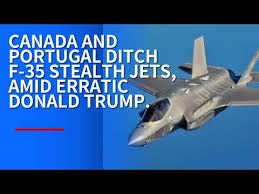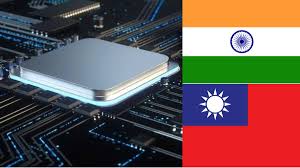My Article published on the Chanakya Forum Website
on 24 Mar 25.
A recent Indian defence committee has recommended increasing private sector participation in military aircraft manufacturing to enhance the Indian Air Force’s capabilities. The committee, led by the defence ministry’s top bureaucrat, submitted its report to Defence Minister Rajnath Singh, who has directed that the recommendations be implemented promptly. The report emphasises the need for private companies to work alongside Defence Public Sector Undertakings (DPSUs) and the Defence Research and Development Organisation (DRDO) to achieve self-reliance in aerospace manufacturing. It suggests implementing short-, medium–, and long-term measures to expedite the production of Light Combat Aircraft (LCA) variants, including Mk-1, Mk-1A, and Mk-2, to address delays and strengthen the IAF’s operational readiness.
India’s aerospace and defence sector has undergone significant transformation in recent decades, evolving from a predominantly state-controlled domain to increasingly embracing private sector participation. Fighter jet production, a critical component of national defence, has traditionally been the preserve of public sector undertakings (PSUs) like Hindustan Aeronautics Limited (HAL). However, with the government’s push for indigenisation, self-reliance, and modernisation under initiatives like “Make in India,” the private sector is emerging as a vital player in this high-stakes industry. This article examines the intricacies of how private companies contribute to India’s defence capabilities and what lies ahead for this evolving partnership.
Historical Context
India’s journey into fighter jet production began in the mid-20th century, heavily reliant on foreign technology and licensing agreements. The 1960s saw HAL commence production of the Soviet-designed MiG-21 under license, marking the start of India’s aircraft manufacturing journey. Over the years, HAL expanded its portfolio, producing aircraft like the Jaguar, Mirage 2000, and Su-30 MKI, all under similar arrangements with foreign OEMs. These efforts established HAL as the cornerstone of India’s defence aviation industry, supported by other PSUs and the Defence Research and Development Organisation (DRDO).
The push for Indigenous fighter jet development gained momentum with the HF-24 Marut, designed by German engineer Kurt Tank in the 1960s. However, the Light Combat Aircraft (LCA) Tejas program, initiated in the 1980s by the Aeronautical Development Agency (ADA) with HAL as the production partner, represented a significant leap towards self-reliance. The Tejas, inducted into the Indian Air Force (IAF) in 2016, showcased India’s ability to design and build a modern fighter jet, albeit with substantial reliance on imported components.
Historically, private sector involvement in fighter jet production was minimal. The defence sector’s strategic importance, high capital requirements and restricted access to advanced technology confined manufacturing to PSUs. While effective in establishing a foundational aerospace industry, this PSU-centric model faced limitations in scalability, innovation, and meeting the IAF’s growing demands, setting the stage for private sector inclusion.
Policy Changes Enabling Private Sector Participation
A series of progressive policy reforms have driven the shift towards private sector involvement in defence manufacturing, including fighter jets. Launched in 2014, the “Make in India” initiative sought to bolster domestic manufacturing and reduce import dependency, with defence identified as a priority sector. This program encouraged private companies to participate in defence production by fostering a conducive business environment and promoting collaborations with global players.
A pivotal policy change was the liberalisation of Foreign Direct Investment (FDI) in defence. Previously capped at 26%, the FDI limit was raised to 74% under the automatic route in 2020, with provisions for up to 100% on a case-by-case basis for critical technologies. This opened doors for foreign OEMs to invest in India, often in partnership with private Indian firms, facilitating technology transfer and capacity building.
The Strategic Partnership (SP) Model, introduced in the 2017 Defence Procurement Procedure (DPP), marked another milestone. Designed to foster long-term collaborations between private Indian companies and foreign OEMs, the SP Model identifies private firms as Strategic Partners in manufacturing major defence platforms, including fighter aircraft. The selection process emphasises financial stability, technical expertise, and manufacturing capabilities to create a robust domestic defence industrial base.
Revisions to the DPP further supported this shift. The DPP 2016 introduced the “Buy (Indian-IDDM)” category—Indigenously Designed, Developed, and Manufactured—prioritising equipment with at least 40% Indigenous content. Offset clauses in defence contracts, mandating foreign vendors to invest a percentage of the contract value in India, have also incentivised partnerships with private companies. These policies collectively signal a departure from the PSU monopoly, inviting private sector innovation and investment.
Current Involvement of the Private Sector
The private sector’s role in Indian fighter jet production is multifaceted, spanning manufacturing, supply chain contributions, and support services. While HAL remains the primary assembler of fighter jets like the Tejas, private companies are increasingly integrated into the production ecosystem.
Supply Chain Contributions. In the Tejas program, private firms supply critical components and sub-systems. Dynamatic Technologies, for instance, manufactures the front fuselage of the Tejas, demonstrating the precision and reliability private players can offer. Larsen & Toubro (L&T) contributes to various aerospace projects, leveraging its engineering expertise, while Tata Advanced Systems Limited (TASL) participates in component manufacturing and assembly processes. These collaborations reduce HAL’s burden and enhance production efficiency, paving the way for a more robust and agile production ecosystem.
Offset Obligations. Major defence deals have catalysed private sector involvement. The 2016 Rafale deal with France’s Dassault Aviation, involving 36 fighter jets, included offsets worth billions. Reliance Defence and Engineering partnered with Dassault to fulfil these obligations, producing components and establishing a manufacturing facility in Nagpur. Such partnerships generate business for private firms, facilitating skill development and technology absorption.
Maintenance, Repair, and Overhaul (MRO). Beyond production, private companies are making inroads into MRO services, which are essential for maintaining fighter jet fleets. TASL has established advanced MRO facilities that service military and civilian aircraft, while Mahindra Defence Systems supports aerospace equipment. These services ensure operational readiness, a critical factor given the IAF’s ageing fleet.
Emerging Technologies. Some private firms are exploring adjacent fields like Unmanned Aerial Vehicles (UAVs). Companies like TASL and Adani Defence & Aerospace are developing drones and building aerospace expertise that could eventually support fighter jet programs. While UAVs differ from manned fighters, the technological overlap strengthens the private sector’s aerospace capabilities.
Technology Transfer and Innovation. Technology transfer remains a cornerstone of private sector growth. Collaborations with foreign OEMs provide access to advanced systems, such as radar and propulsion technologies, while joint ventures encourage co-development. Private firms also invest in innovation, exploring additive manufacturing (3D printing) and artificial intelligence to streamline production and reduce costs. Over time, these efforts could lead to fully indigenous fighter jet designs.
Role of MSMEs. Micro, Small, and Medium Enterprises (MSMEs) are the backbone of the aerospace supply chain. These firms produce smaller components—fasteners, wiring harnesses, and sub-assemblies—supporting larger private companies and PSUs. By integrating MSMEs, the industry can enhance efficiency and scalability, fostering a broader industrial ecosystem and providing opportunities for growth and innovation.
Key Defence Production Private Companies. Several private companies have shown interest in participating in fighter jet manufacturing, either independently or in collaboration with HAL and foreign OEMs.
-
- Tata Advanced Systems Limited (TASL) has emerged as a leader in India’s private aerospace sector. Its joint venture with Lockheed Martin to produce aero structures, including wings for the C-130J Super Hercules, showcases its manufacturing prowess. Although the F-16 production proposal did not materialise, TASL’s capabilities position it for future fighter jet projects.
-
- Mahindra Defence Systems. Mahindra has leveraged its automotive expertise to enter defence manufacturing, supplying aircraft components and expressing interest in the SP Model. Its partnership with Airbus for helicopter components reflects its ambition to expand into fighter jet production.
-
- Larsen & Toubro (L&T). L&T’s decades-long experience in defence engineering includes contributions to the Tejas and other platforms. Its advanced manufacturing facilities and focus on precision engineering make it a strong contender in aerospace production.
-
- Adani Defence & Aerospace. It aims to enhance India’s self-reliance in defence manufacturing. While active in UAVs, avionics, and MRO, it seeks partnerships for fighter jet production but lacks an indigenous fighter aircraft program.
Challenges Faced by Private Companies
Private companies face significant hurdles in entering fighter jet production despite growing involvement.
-
- High Capital Investment. Aerospace manufacturing demands substantial upfront investment in infrastructure, technology, and skilled manpower. The long gestation periods before returns materialise deter many firms, particularly more minor players.
-
- Technological Barriers. Fighter jet production requires mastery of complex technologies—avionics, propulsion, and materials science—that PSUs like HAL have developed over decades. Private companies often lack this expertise, relying on foreign partnerships that may limit technology transfer.
-
- Bureaucratic Procurement Processes. The defence procurement system is notoriously complex, with lengthy tendering, evaluation, and approval stages. This can discourage private firms accustomed to faster commercial cycles.
-
- Competition with PSUs. HAL’s entrenched position and government backing create an uneven playing field. Private companies must compete with HAL’s economies of scale and establish relationships with the IAF.
-
- Quality and Certification. Fighter jets demand uncompromising quality and safety standards. Private firms must navigate rigorous certification processes, such as those mandated by the Centre for Military Airworthiness and Certification (CEMILAC), adding time and cost.
Future Prospects
The private sector’s role in Indian fighter jet production is set for significant expansion, driven by policy continuity, market demand, and technological advancements. Government initiatives such as Atmanirbhar Bharat and the Defence Acquisition Procedure (DAP) foster a stable investment climate, encouraging private firms to engage in aerospace manufacturing. Policy measures like strategic partnerships and increased foreign direct investment (FDI) limits further enhance private sector participation.
Market demand is another key driver. The Indian Air Force (IAF) is undergoing rapid modernisation, with plans to replace ageing aircraft and induct advanced fighters. Additionally, India’s ambition to become a defence exporter presents lucrative opportunities for private companies. Countries in Southeast Asia, the Middle East, and Africa could become potential buyers, bolstering the case for increased private production.
Technological advancements are also reshaping the industry. Additive manufacturing, artificial intelligence, and advanced materials reduce entry barriers and enable new players to contribute. Collaborations with global aerospace firms can further accelerate technology absorption.
However, for private firms to succeed, key enablers must be addressed. Streamlining procurement processes, enhancing R&D funding, and developing a skilled workforce are critical. Bureaucratic hurdles and financial constraints have historically hindered private participation, but targeted reforms could unlock their full potential. If these challenges are managed effectively, private companies could be pivotal in next-generation fighter projects like the Advanced Medium Combat Aircraft (AMCA). This would strengthen India’s defence manufacturing ecosystem and enhance its strategic autonomy in aerospace technology.
Conclusion
The involvement of the private sector in Indian fighter jet production marks a paradigm shift from a PSU-dominated landscape to a collaborative ecosystem. While challenges like capital intensity and technological gaps persist, the opportunities—driven by policy reforms, IAF requirements, and global partnerships—are immense. Companies like TASL, Mahindra, and L&T exemplify the potential of private enterprises to enhance India’s defence capabilities. As the nation strives for self-reliance, the private sector’s role will be pivotal in shaping a robust, innovative, and competitive aerospace industry, ensuring that India’s fighter jets soar not just in the skies but also as symbols of industrial prowess and strategic autonomy.
Link to the article on the website:-
INVOLVEMENT OF THE PRIVATE SECTOR IN INDIAN FIGHTER JET PRODUCTION
Please Do Comment.
For regular updates, please register your email here:-
References and credits
To all the online sites and channels.
Pics Courtesy: Internet
Disclaimer:
Information and data included in the blog are for educational & non-commercial purposes only and have been carefully adapted, excerpted, or edited from reliable and accurate sources. All copyrighted material belongs to respective owners and is provided only for wider dissemination.
References:-
- Singh, Abhijit. “Public-Private Partnership in Indian Defence Manufacturing: A Strategic Perspective.” Journal of Defence Studies, vol. 16, no. 2 (2023): 51-78.
- Raghavan, Ramesh. “The Role of Private Companies in Defence Production: Lessons from Global Models.” Strategic Analysis, vol. 45, no. 1 (2022): 29-50.
- Mehta, Sameer. “India’s Quest for Fighter Jet Autonomy: Challenges and Opportunities for the Private Sector.” Air Power Journal, vol. 17, no. 3 (2022): 12-35.
- Sharma, Arvind. “HAL and the Evolving Role of Indian Private Defence Firms.” Journal of Defence Research and Development, vol. 19, no. 4 (2023): 88-105.
- Kapoor, Deepak. India’s Defence Industry: Evolution, Challenges, and Prospects. Pentagon Press, 2021.
- Chakrabarti, Rajesh. Defence Economics in India: The Transition to a Military-Industrial Complex. Oxford University Press, 2020.
- Sinha, Rakesh. Privatisation and Defence Manufacturing in India: The Road Ahead. Routledge, 2019.
- Pandit, Rajat. “HAL and the Private Sector: A New Era in Indian Fighter Jet Production.” The Times of India, March 10, 2023.
- Peri, Dinakar. “Adani and Tata’s Role in India’s Advanced Medium Combat Aircraft (AMCA) Project.” The Hindu, August 12, 2023.
- Unnithan, Sandeep. “How Private Players Are Transforming Indian Defence Manufacturing.” India Today, November 15, 2022.
- Singh, Rahul. “India’s LCA Tejas and the Private Sector: The Growing Role of Private Industry in Aerospace.” Hindustan Times, July 20, 2023.
- Mitra, Joydeep. “The Rafale Offset Deal: How Private Companies are Gaining from India’s Fighter Jet Deals.” Business Standard, September 25, 2023.
- Centre for Air Power Studies (CAPS). The Future of India’s Indigenous Fighter Jet Development: Role of Private Sector. CAPS Report No. 231, 2023.
- Observer Research Foundation (ORF). Public-Private Collaboration in Indian Defence: Global Lessons and Local Challenges. ORF Special Report, 2022.
- Institute for Defence Studies and Analyses (IDSA). Self-Reliance in Indian Defence: Evaluating the Private Sector’s Role. IDSA Monograph No. 82, 2023.
- Carnegie India. India’s Fighter Jet Ecosystem: Bridging the Capability Gap through Private Sector Involvement. New Delhi: Carnegie India, 2023.
- Kumar, Rohit. “The Evolution of the Tejas Fighter Jet: Indigenous Capability and the Role of Private Sector.” Defence and Security Review, vol. 24, no. 3 (2022): 15-37.



